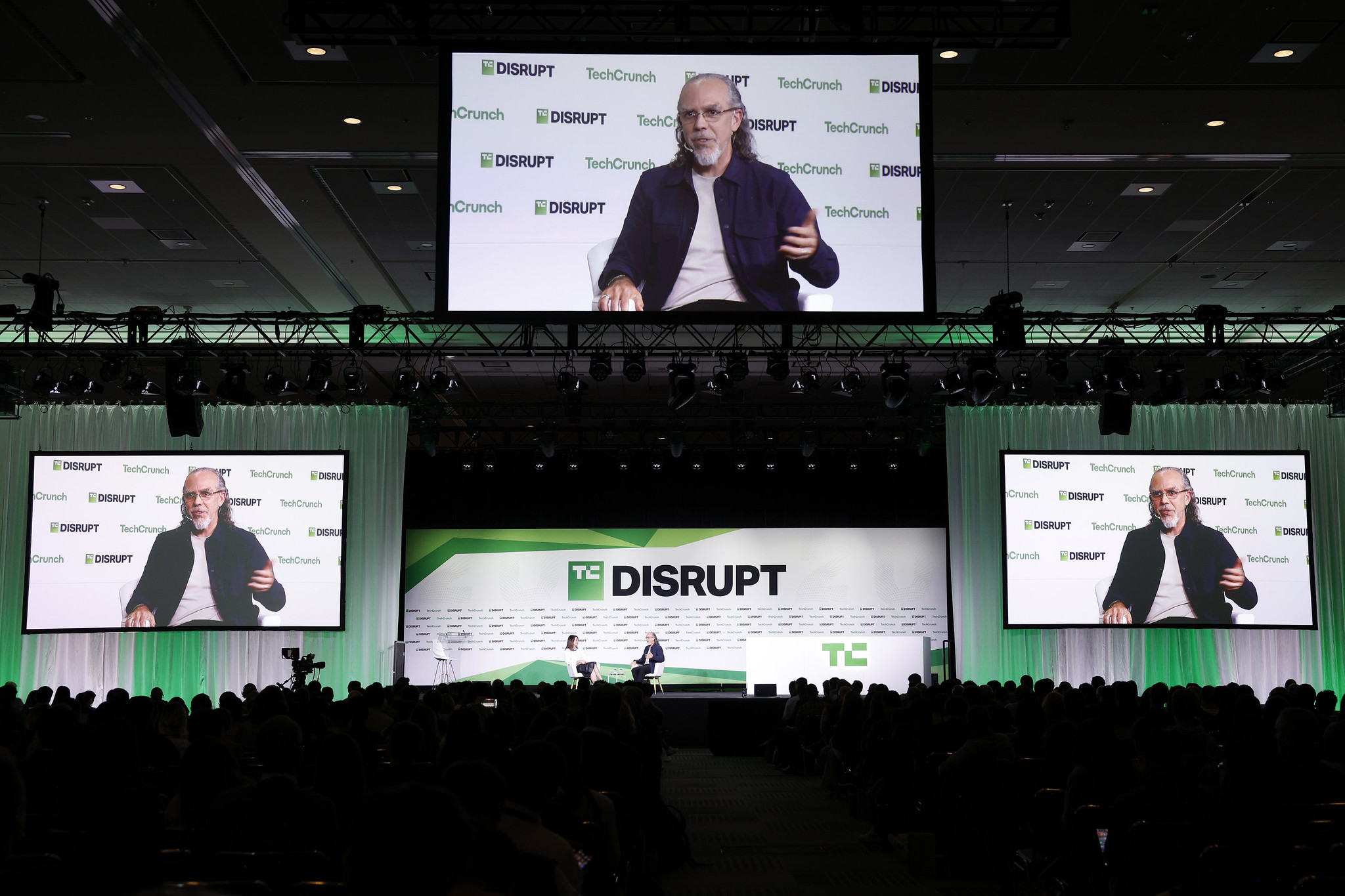
Alphabet, the colossal parent company of Google, is fundamentally recalibrating its approach to nurturing audacious technological endeavors, shifting toward a model that increasingly propels its "moonshot" projects into independent corporate entities rather than integrating them as internal subsidiaries. This significant strategic evolution, articulated by Astro Teller, who leads the experimental division known as X, during a recent appearance at TechCrunch Disrupt, signals a refined understanding of how best to commercialize high-risk, high-reward innovations. The new paradigm leverages a dedicated venture fund specifically designed to foster the autonomy and growth of these fledgling companies.
The Strategic Pivot: Beyond Internal Subsidiaries
For years, Alphabet’s X, famously known as the "moonshot factory," has been the crucible for projects aiming to solve some of the world’s most intractable problems through radical technological breakthroughs. Its mandate has always been to pursue ideas that seem fantastical at first glance but possess a "glimmer of hope" for real-world impact. Historically, successful ventures graduating from X, such as Waymo, the pioneering self-driving car company, and Wing, the drone delivery service, transitioned into standalone subsidiaries operating under the broader Alphabet corporate umbrella. This internal integration offered substantial benefits, including access to Alphabet’s vast resources, talent pool, and brand recognition.
However, a decade of experimentation has illuminated a crucial distinction among these ambitious projects. Teller revealed that while certain moonshots thrive within Alphabet’s structured environment, others demonstrate a greater propensity for accelerated development and market penetration when operating with enhanced independence. These distinct ventures, often characterized by their profound difference from Alphabet’s core businesses, can navigate market dynamics more nimbly and attract a diverse array of external investment and expertise without the perceived constraints of a large corporate parent. The rationale is clear: by positioning these entities just outside the direct control of Alphabet, they can maintain a close strategic alliance, benefiting from shared knowledge and collaborative efforts, while simultaneously enjoying the agility and focused vision of a startup. This shift marks a sophisticated evolution in corporate innovation, moving beyond a simple incubation model to one that actively cultivates external ecosystems for its most disruptive ideas.
Series X Capital: Fueling External Growth
Central to this revised strategy is Series X Capital, an investment fund that has successfully raised over $500 million. This fund stands apart from Alphabet’s other venture arms—such as GV (formerly Google Ventures), which invests broadly in early-stage startups; CapitalG, focused on growth-stage companies; and Gradient Ventures, dedicated to AI startups. What makes Series X Capital unique is its explicit and legally mandated mission: to exclusively invest in companies that emerge from X. Former YouTube executive and Facebook CFO, Gideon Yu, leads this specialized fund, bringing a wealth of experience in high-growth technology ventures.
The deliberate structure of Series X Capital, where Alphabet maintains only a minority limited partner (LP) stake, is pivotal. Teller emphasized that a substantial Alphabet investment would effectively negate the very purpose of establishing an independent fund, as the spinouts would still be perceived as extensions of the conglomerate. By design, Series X Capital enables these new companies to attract external capital and governance, fostering genuine autonomy while still benefiting from a deeply understanding investor base that comprehends the unique challenges and potential of moonshot technologies. This model allows X to systematize the spinout process, which previously required identifying external venture investors willing to acquire a majority stake (at least 51%) to ensure independence from Alphabet. Now, with a dedicated fund, the transition is streamlined, allowing X to maintain strategic ties without exerting controlling influence. This represents a significant refinement in how large corporations can foster innovation without stifling the entrepreneurial spirit critical for disruptive technologies.
The Philosophy of "Moonshots": Defining Audacious Innovation
X’s rigorous definition of a "moonshot" remains the bedrock of its exploratory endeavors. Each project must satisfy three stringent criteria: first, it must endeavor to resolve a monumental global issue; second, it must propose a novel product or service capable of genuinely eradicating that problem; and third, it must harness breakthrough technology that offers a credible "glimmer of hope" for a viable solution. Critically, as Teller pointed out, if an idea sounds immediately "reasonable," it inherently fails the moonshot test. The very essence of a moonshot lies in its perceived unreasonableness, its audacious ambition that pushes the boundaries of current capabilities and conventional wisdom.
This philosophy is deeply rooted in historical precedents of grand challenges, most notably the Apollo program, which famously aimed to land a man on the moon. Such endeavors, by their nature, demand extraordinary vision, sustained investment, and a tolerance for high failure rates. For X, this means embracing ideas that defy easy categorization or immediate commercial viability, recognizing that true breakthroughs often emerge from the fringes of established thought. The challenge, then, is not merely to identify radical ideas, but to create a system that can methodically test and refine them without succumbing to the pressures of short-term returns or conventional market logic. This distinguishes X from traditional corporate R&D departments, which often focus on incremental improvements or extensions of existing product lines.
A Culture of Intellectual Honesty and Iteration
The operational culture within X is famously characterized by its relentless pursuit of intellectual honesty and a paradoxical celebration of failure. Teller articulated that the lab actively seeks reasons to "kill off" promising ideas through rigorous, small-scale, and cost-effective testing. When a proposed moonshot, despite its wild premise, meets the three core criteria and presents a testable hypothesis, X invests minimal resources to ascertain its true feasibility. If the tests reveal the idea to be "more crazy" than initially anticipated, the project is swiftly terminated. This "fail fast, fail cheap" mantra is not viewed as a setback but as a crucial learning opportunity, a "feature" rather than a "bug."
This radical approach necessitates a profound detachment from individual ideas. Teller revealed that he often does not even know the original proponents of many projects, including the hugely successful Waymo and Wing. This deliberate anonymity prevents emotional attachment, which can often cloud judgment and impede objective evaluation. In a traditional corporate setting, personal investment in a project can lead to a phenomenon known as "founder’s bias," where individuals cling to ideas even when evidence suggests their impracticality. By fostering an environment where shedding non-viable projects is actively rewarded, X ensures that resources are continuously redirected toward the most promising avenues. The result is a brutal 2% hit rate, meaning the vast majority of projects initiated at X are ultimately shelved. This includes entire categories of innovation, such as early copywriting AI tools, which were later rendered redundant by the rapid advancements in foundational models. Such an environment, while demanding, cultivates a robust innovation pipeline, ensuring only the most resilient and impactful ideas survive the gauntlet.
Incentivizing Innovation and Risk-Taking
Despite the emphasis on detachment from ideas, X’s employee incentive structure is carefully designed to attract top talent and reward successful innovation. While working on early-stage projects within X, employees are compensated similarly to other Google staff, receiving standard salaries without equity in unproven ventures. Teller clarified that this absence of early equity is intentional, as these nascent projects are merely "ideas we’re trying to learn about," not yet established companies. This removes the financial pressure that often compels traditional startup founders to persevere with flawed ideas, even when evidence points to their futility. X employees are thus empowered to objectively evaluate and, if necessary, terminate projects without personal financial repercussions.
However, when a project successfully navigates the rigorous testing phase and is deemed ready to spin out as an independent company, the financial incentives become substantial. Employees involved in these graduating projects receive a significant equity stake in the newly formed entity. Teller likened this to the ownership percentage an individual might acquire if they had launched the startup from their own garage at a similar stage of funding, but with the distinct advantage of having incurred no personal financial risk during the intensive, exploratory phase. This unique trade-off is explicitly communicated to prospective X employees: while the "four or five standard deviation upside" (i.e., the truly astronomical returns) might be higher for an entrepreneur starting entirely from scratch, X offers a unparalleled opportunity to act as a "card counter of innovation," exploring groundbreaking ideas without personal financial exposure. This model effectively marries the security of corporate employment with the potential for entrepreneurial wealth, creating a powerful magnet for individuals driven by both impact and reward.
Pioneering Ventures: Recent Spinouts and Future Horizons
The new spinout strategy is already yielding tangible results. In 2025 alone, X has successfully launched at least two companies: Taara and Heritable Agriculture. Taara is at the forefront of developing cutting-edge wireless optical communication technology, aiming to bridge digital divides and provide high-speed internet access in challenging terrains where traditional fiber optic cables are impractical or too costly. Heritable Agriculture, on the other hand, is a biotech enterprise leveraging advanced machine learning techniques to dramatically accelerate the process of crop breeding, promising to enhance global food security and develop more resilient, productive agricultural systems.
These new ventures join a growing list of X spinouts that have previously secured external funding, demonstrating the viability and market appeal of X’s innovations. These include Malta, a company focused on grid-scale renewable energy storage solutions; Dandelion, which specializes in geothermal heating and cooling systems for homes; and iyO, a developer of AI-powered earbuds designed for enhanced audio experiences and intelligent personal assistance.
Most recently, on the eve of the TechCrunch Disrupt conference, X unveiled its newest moonshot company, Anori. Described as an "AI platform to help real estate developers, the architecture and construction industries, and cities untangle the complexities of new building projects," Anori tackles a colossal and often overlooked problem. When asked about Anori’s moonshot credentials, Teller underscored the immense scale of the challenge it addresses. The built environment is a staggering contributor to global solid waste and carbon dioxide emissions, accounting for approximately 25% in both categories. It represents a fundamental human need, a significant portion of global GDP, and an industry ripe for disruption. Anori aims to leverage artificial intelligence to optimize design, planning, and construction processes, promising not only efficiency gains but also a substantial reduction in environmental impact, thereby tackling a problem of profound economic, social, and ecological significance.
Broader Implications for Tech and Industry
Alphabet’s refined approach to its moonshot factory holds significant implications for the broader technology landscape and corporate innovation models. For Alphabet itself, this strategy allows for more agile portfolio management, enabling the company to nurture high-risk ventures without burdening its core financial statements or diluting its strategic focus. It represents a sophisticated form of corporate venture capital, one that is deeply integrated with an internal innovation engine but externally oriented for commercialization. This could lead to a higher return on investment for X’s groundbreaking research by tapping into external capital markets and entrepreneurial drive.
For the wider tech ecosystem, the proliferation of X spinouts injects a fresh wave of highly innovative, rigorously vetted companies into the startup arena. This not only creates new investment opportunities for venture capitalists beyond Series X Capital but also fosters a dynamic environment where cutting-edge technologies are brought to market faster and with greater independence. These companies, having survived X’s brutal gauntlet, possess a unique validation that can attract talent and further investment. The emphasis on "intellectual honesty" and the systematic killing of unviable ideas could also serve as a model for other corporate innovation labs, promoting a more disciplined and data-driven approach to R&D. Ultimately, Alphabet’s strategic pivot underscores a maturing understanding of how to bridge the chasm between radical scientific discovery and scalable market impact, setting a new benchmark for how large enterprises can successfully cultivate the next generation of disruptive technologies.





